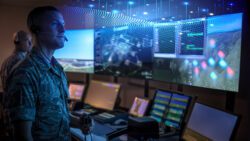Charles River Analytics, a developer of intelligent systems solutions, announces a new contract from the Office of Naval Research (ONR) to investigate and model how human intuition works and how it can be effectively trained. This contract is valued at $500,000 and part of a larger team effort under ONR’s Basic Research Challenge: Enhancing Intuitive Decision Making through Implicit Learning Basic Research Challenge (I2BRC) that is valued at $3.75 million over four years.
Charles River will focus on the seldom-studied topic of intuition, which, if it could be reliably trained, would be useful to many in the US Navy. Sonar operators, small unit leaders, unmanned systems operators, information analysts, and others must make decisions quickly and act effectively. However, developing intuition typically takes years of training and on-the-job experience. This means that most trainees are unable to perform the intuitive decision making needed for expert-level performance, costing valuable time, money, and potentially lives. Through this research challenge, ONR is focusing on understanding the science of intuition, developing computational models of intuition from this scientific understanding, and creating training using these models to improve intuition.
Dr. James Niehaus, Scientist, explained the goal of the research. “We will enable Warfighters to develop and then trust their gut instincts, giving them a decisive edge on the battlefield. Intuition is the next great frontier for training.”
Charles River is a world-leader in developing novel techniques for creating computational models of complex phenomenon, such as intuition. For the I2BRC program, Charles River will use its probabilistic programming environment, Figaro, to analyze data on how participants perform intuitive tasks.
Charles River’s partners on this effort include DSCI Mesh Solutions LLC, Northwestern University, Defense Group Inc., the University of California at Los Angeles, and the Massachusetts Institute of Technology.
This material is based upon work supported by the Office of Naval Research under Contract No. N00014-13-C-0160. Any opinions, findings and conclusions or recommendations expressed in this material are those of the author(s) and do not necessarily reflect the views of the Office of Naval Research.




